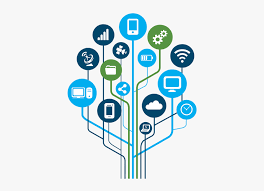
The Cloud Disaster Recovery Market was valued at USD 9.7 billion in 2023 and is expected to reach USD 71.8 billion by 2032, growing at a CAGR of 24.94% from 2024-2032.
Market Summary
The surge in the CDR market is primarily attributed to the widespread adoption of cloud computing, an increasing emphasis on data protection, and the imperative for business continuity across various industries. As organizations generate and rely on vast amounts of data, the need for robust, scalable, and cost-effective disaster recovery solutions has become paramount.
Get Sample Report: https://www.snsinsider.com/sample-request/1540
Key players
The major key players along with their products are
Amazon Web Services (AWS) - AWS Elastic Disaster Recovery
Microsoft - Azure Site Recovery
IBM - IBM Disaster Recovery as a Service (DRaaS)
Google Cloud - Google Cloud Backup and DR
VMware - VMware Site Recovery
Dell Technologies - Dell EMC Data Protection Suite
Cisco Systems - Cisco HyperFlex Disaster Recovery
Hewlett Packard Enterprise (HPE) - HPE GreenLake Disaster Recovery
Oracle - Oracle Cloud Disaster Recovery
Commvault - Commvault Backup & Disaster Recovery
Veeam Software - Veeam Disaster Recovery Orchestrator
Zerto - Zerto for Disaster Recovery
Acronis - Acronis Cyber Protect Cloud
Veritas Technologies - Veritas Resiliency Platform
Carbonite (OpenText) - Carbonite Server Backup
Datto (Kaseya) - Datto Continuity for Microsoft Azure
Unitrends - Unitrends Backup and Disaster Recovery
Sungard Availability Services - Managed Disaster Recovery Services
Rackspace Technology - Rackspace DRaaS
Hitachi Vantara - Hitachi Cloud Disaster Recovery Service
Market Analysis
The CDR market's growth trajectory is influenced by several key factors:
Cloud Adoption: Organizations are increasingly migrating their operations to the cloud to enhance scalability, flexibility, and cost-efficiency. This shift necessitates reliable disaster recovery solutions to safeguard critical data and applications.
Data Protection and Security: The rising frequency of cyber threats, including ransomware attacks, has heightened awareness about data security. Cloud disaster recovery solutions offer advanced features such as immutable backups, ensuring data integrity and swift recovery post-incident.
Regulatory Compliance: Stringent data protection regulations mandate organizations to implement effective disaster recovery strategies, further propelling the demand for CDR services.
Market Scope
The CDR market encompasses a diverse range of services and solutions tailored to meet the disaster recovery needs of various organizations:
Service Types: The market offers data protection, real-time replication, backup and recovery, and professional services, catering to different recovery objectives and organizational requirements.
Deployment Models: Organizations can choose from private, public, or hybrid cloud deployments based on their specific needs, resources, and security considerations.
Organization Sizes: Both large enterprises and Small and Medium-sized Enterprises (SMEs) are increasingly adopting CDR solutions to ensure business continuity and resilience.
End-Use Industries: Key sectors utilizing CDR solutions include Banking, Financial Services, and Insurance (BFSI), retail and consumer goods, government and public sector, manufacturing, healthcare and life sciences, media and entertainment, among others.
Market Drivers
Several factors are driving the rapid expansion of the CDR market:
Increasing Cyber Threats: The escalation of cyberattacks has compelled organizations to invest in robust disaster recovery solutions to protect their data and maintain operational continuity.
Digital Transformation: The acceleration of digital initiatives has led to the adoption of cloud-based applications, necessitating effective disaster recovery strategies.
Remote Work Trends: The shift towards remote work has highlighted the need for accessible and reliable disaster recovery solutions to support distributed workforces.
Get Enquiry Report: https://www.snsinsider.com/enquiry/1540
Key Segments:
By Service Type
Data Protection
Real-Time Replication
Backup & Recovery
Professional Services
By Deployment
Private
Hybrid
Public
By Organization Size
Large Enterprises
Small & Medium Enterprises
By End - Use
BFSI
Retail and Goods
Government and Public Sector
Manufacturing
Healthcare and Life Sciences
Media and Entertainment
Others
Key Factors
Critical factors influencing the CDR market include:
Technological Advancements: Innovations in artificial intelligence and machine learning are enhancing disaster recovery capabilities, enabling faster and more efficient data restoration.
Cost Efficiency: Cloud-based disaster recovery offers a cost-effective alternative to traditional on-premises solutions, reducing capital expenditures and operational costs.
Scalability: The inherent scalability of cloud solutions allows organizations to adjust their disaster recovery resources in line with evolving business needs.
Regional Analysis
The adoption and growth of CDR solutions vary across regions:
North America: Leading the market share, North America's growth is driven by a well-established technological infrastructure, presence of major cloud service providers, and stringent data protection regulations.
Asia Pacific: Anticipated to experience the fastest growth, the Asia Pacific region's expansion is fueled by rapid digital transformation, increasing cloud adoption, and a burgeoning SME sector.
Europe: The region's focus on data protection and compliance with regulations such as GDPR is driving the adoption of CDR solutions.
Recent Developments
The CDR market has witnessed significant developments:
Strategic Investments: In February 2025, Microsoft made an equity investment in Veeam Software to enhance their partnership and develop AI-driven disaster recovery products, underscoring the importance of integrating advanced technologies into CDR solutions.
Service Enhancements: Major cloud providers have expanded their disaster recovery offerings. For instance, Google Cloud introduced immutable backup vaults in September 2024, enhancing protection against data loss and cyber threats.
Product Launches: VMware launched VMware Live Recovery in March 2024, a unified disaster recovery solution integrating cyber recovery for VMware Cloud Foundation, offering low Recovery Point Objectives (RPOs) and flexible scaling.
Get Complete Report: https://www.snsinsider.com/reports/cloud-disaster-recovery-market-1540
Conclusion
The projected exponential growth of the Cloud Disaster Recovery market reflects the increasing recognition of the critical role these solutions play in ensuring business resilience. As organizations continue to navigate the complexities of digital transformation, the adoption of robust, scalable, and cost-effective disaster recovery strategies will be essential to safeguard operations against unforeseen disruptions.
About Us
[Your Company Name] is a leading provider of comprehensive cloud disaster recovery solutions, dedicated to helping organizations protect their critical data and maintain business continuity. With a focus on innovation and customer-centric services, we offer tailored solutions to meet the unique needs of businesses across various industries.





















Write a comment ...